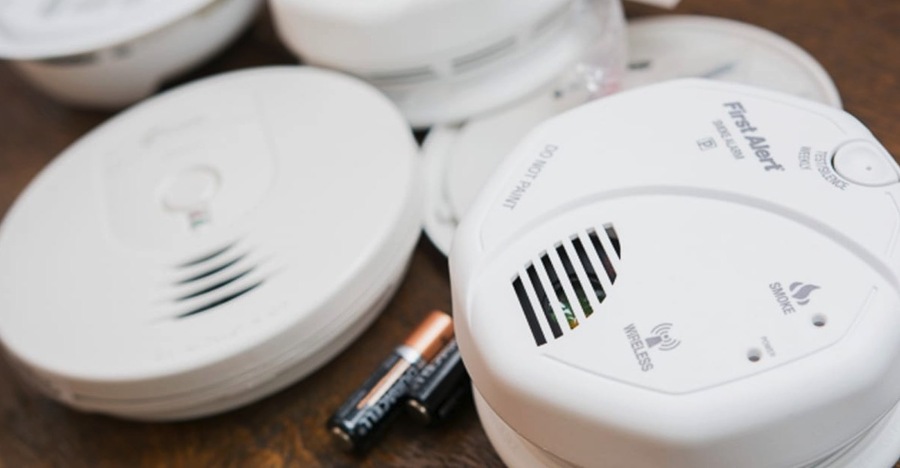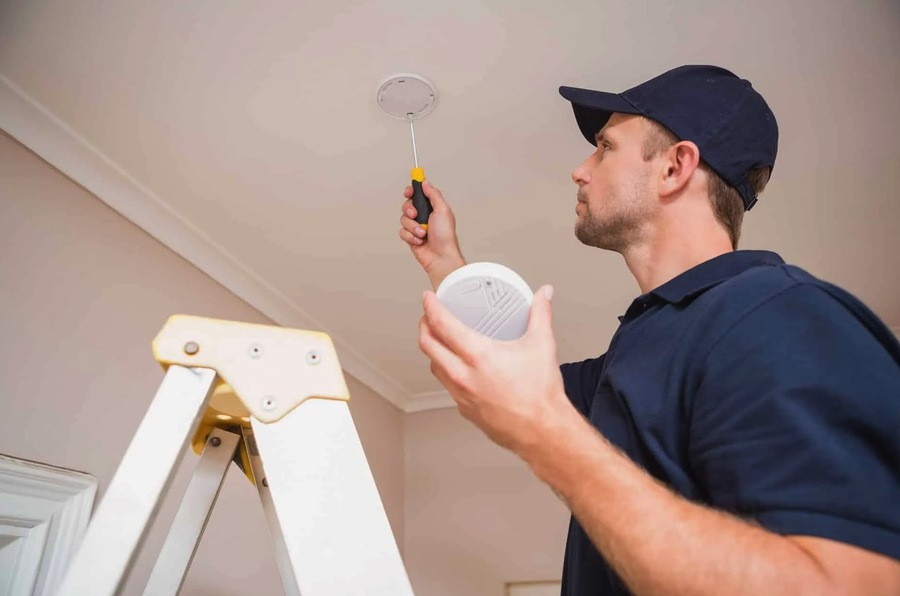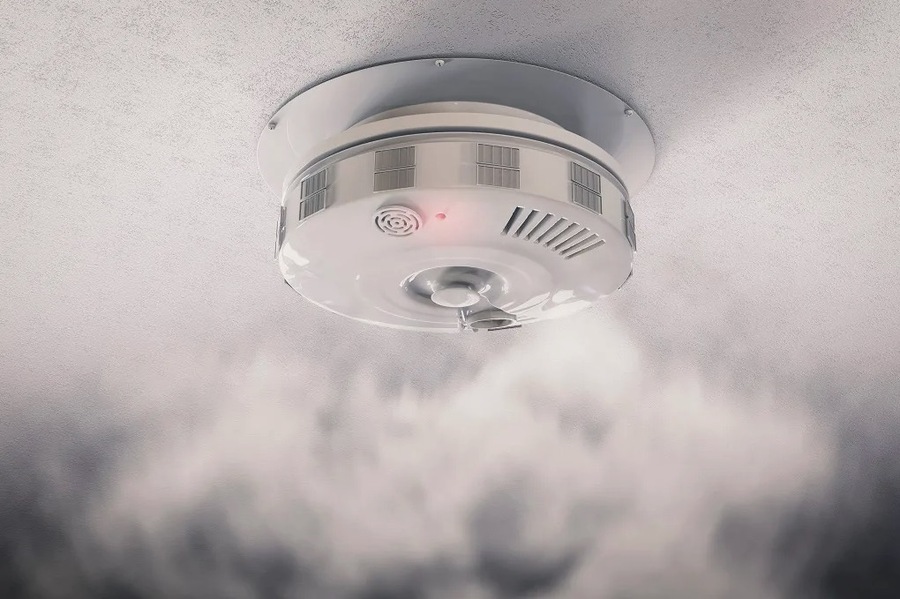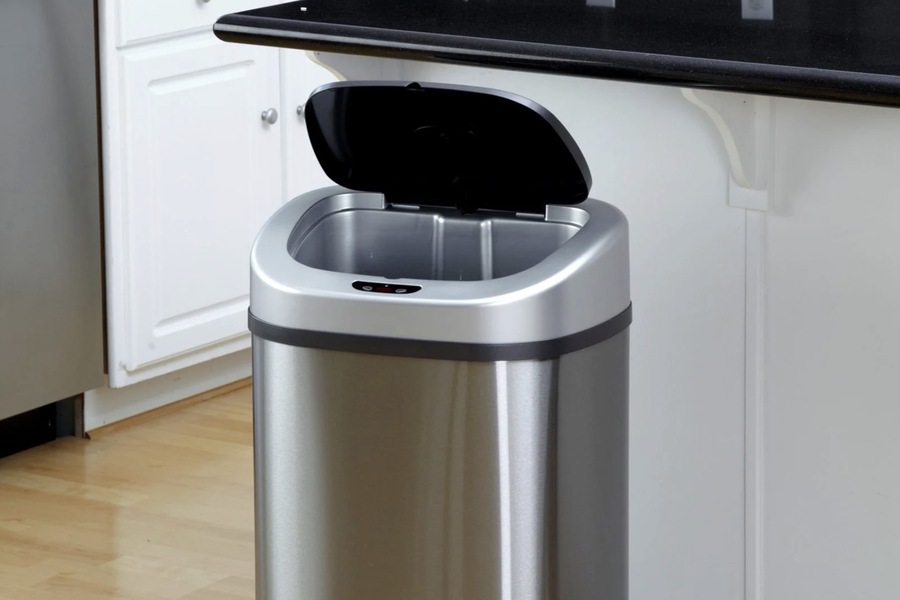Smoke detectors are essential devices designed to detect the presence of smoke, typically as an indicator of fire. They play a crucial role in ensuring the safety of homes, offices, and other indoor environments by providing early warnings that can help prevent fire-related disasters. Regular home maintenance includes checking the functionality of smoke detectors to ensure they are in working condition and can effectively protect against potential fire hazards.
The Inventor of the Modern Smoke Detector
The modern smoke detector is attributed to Swiss physicist Walter Jaeger. Jaeger’s journey toward this groundbreaking invention was somewhat serendipitous. Initially, he aimed to create a detector for toxic gases. However, none of his prototypes worked as intended. Frustrated by repeated failures, Jaeger lit a cigarette in despair, and to his surprise, one of his devices started making sounds. This reaction was due to the cigarette smoke entering the device, thus highlighting its potential for smoke detection rather than gas detection. This accidental discovery laid the foundation for the modern smoke detector.
The Principle of Operation of Smoke Detectors
Ionization Smoke Detectors
Ionization smoke detectors contain a small amount of radioactive material between two electrically charged plates, which ionizes the air and creates a current between the plates. When smoke enters the chamber, it disrupts this current, triggering the alarm. These detectors are particularly good at detecting flaming fires.
Optical (Photoelectric) Smoke Detectors
Optical smoke detectors use a light source and a light sensor. In a clear chamber, light from the source does not hit the sensor. However, when smoke enters the chamber, it scatters the light, directing it towards the sensor and triggering the alarm. These detectors are more responsive to smoldering fires.
Aspiration Smoke Detectors
Aspiration smoke detectors continuously draw air samples from the protected area through a network of pipes. The air is then analyzed for the presence of smoke particles. These detectors are highly sensitive and can detect smoke particles at very early stages, making them suitable for high-risk areas.
Linear (Beam) Smoke Detectors
Linear smoke detectors use a projected beam of light across a large area. When smoke crosses the path of the beam, it causes a reduction in the received light, triggering the alarm. These detectors are ideal for large open spaces such as warehouses or auditoriums.

Types of Smoke Detectors
Autonomous Smoke Detectors
Autonomous smoke detectors are standalone units that operate independently of other systems. They contain their own power supply (usually batteries) and alarm sounder. They are easy to install and are suitable for small spaces.
Wireless Smoke Detectors
Wireless smoke detectors are connected to a network without the need for physical wiring. They can communicate with other devices and central monitoring systems, making them suitable for integration into smart home systems.
Wired Smoke Detectors
Wired smoke detectors are connected to the building’s electrical system and often to a central fire alarm system. They are reliable and can provide continuous power, making them ideal for larger buildings or commercial installations.
Importance of Installing Smoke Detectors Indoors
– Early Detection: Smoke detectors provide early warning of a potential fire, allowing occupants to evacuate safely and quickly.
– Life-Saving: By detecting smoke early, these devices can save lives by preventing smoke inhalation and reducing the risk of being trapped in a fire.
– Property Protection: Early detection helps in alerting emergency services sooner, potentially reducing the extent of property damage.
– Legal Requirements: In many regions, smoke detectors are mandated by building codes and regulations for residential and commercial properties.
Important Facts About Smoke Detectors
– Regular Maintenance: Regularly check the functionality of smoke detectors and change the batteries as recommended, usually every six months.
– Avoid False Alarms: Do not bring a lit cigarette or other source of smoke near the detector as it can cause false alarms.
– Testing Button: Smoke detectors are equipped with a test button to verify their functionality. Use this button to perform regular checks.
– Integration with Smart Home Systems: Electronic smoke detectors can be integrated into smart home systems for enhanced monitoring and control.
– Environmental Factors: The effectiveness of smoke detectors can be reduced by moisture and dust. Ensure they are kept clean and dry.

Rules for Installing Smoke Detectors
– Placement: Install smoke detectors on every level of the home, inside bedrooms, and outside sleeping areas.
– Ceiling Installation: Mount detectors high on walls or ceilings as smoke rises.
– Avoid Corners: Avoid installing detectors in corners or near vents, as airflow can affect their performance.
– Regular Testing: Test the detectors monthly using the test button and replace batteries regularly.
Why Contact Specialists for Installation and Maintenance
Professional installation and maintenance of smoke detectors ensure optimal performance and reliability. Specialists have the expertise to:
– Correct Placement: Identify the best locations for installation to maximize detection and minimize false alarms.
– Wiring and Connectivity: Properly wire and connect detectors, especially in complex systems.
– Compliance: Ensure that the installation complies with local building codes and regulations.
– Regular Maintenance: Provide regular maintenance services, including cleaning and battery replacement, to keep detectors functioning properly.
Conclusion
Smoke detectors are indispensable devices for ensuring the safety and security of indoor environments. From their accidental invention by Walter Jaeger to the advanced systems available today, they have evolved significantly. Understanding the different types of detectors and their operation, as well as the importance of regular maintenance and professional installation, can help protect lives and property from the dangers of fire.

Biker, hustler, fender owner, reclaimed wood collector and critical graphic designer. Performing at the crossroads of minimalism and computer science to save the world from bad design. I prefer clear logic to decoration.



